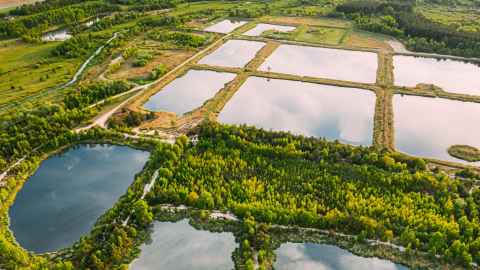Stormwater thinking outside the box
12 February 2023
Opinion: The flooding in Auckland has led to calls for adaptation to extreme rainfall by installing larger drains and pipes to build a more resilient stormwater system, but we need to talk about who should pay, says Asaad Shamsedlin, Conrad Zorn and Liam Wotherspoon.

The floods in Auckland have led to calls for, among other things, bigger, better stormwater infrastructure. But stormwater infrastructure is expensive and complicated, and there is no one-size fits all approach to its management in Auckland, with the region’s variable topography and geology.
The flooding on January 27 this year was caused by an atmospheric river, a term most of us are becoming familiar with, describing a narrow corridor of concentrated moisture in the atmosphere.
As we’ve seen, atmospheric rivers resulting in extreme rainfall can create chaos in our community. Yet only in recent years has research been able to quantify the impact of atmospheric rivers on rainfall in New Zealand. A recent study by researchers from the University of Auckland based on comprehensive rainfall data sets from around 654 rain gauges across New Zealand attempted to quantify such impact and found that 50 to 98 percent of extreme rainfall events were associated with atmospheric rivers, mostly occurring during the summer months (December to February). At the other end of the scale, the absence of atmospheric rivers can trigger droughts.
We need more research in this area to understand how the intensity and the frequency of atmospheric rivers will change in New Zealand thanks to climate change so we can make informed decisions on how best to adapt.
Before embarking on flood adaptation measures, experts will need to consult the community to better understand ... the feasibility of different options, what they are willing to pay for, and what inconvenience they are willing to put up with.
In the recent Auckland flooding, Auckland Airport rainfall gauging station recorded 249 mm of rainfall in 24 hours on January 28, making it the maximum 24-hour rainfall amount recorded at that location, the previous maximum rainfall being 161.8 mm in February 1985. The January rainfall event was an extremely rare 'super' event. It would be classified as rare even under a changing climate.
How can we better prepare for such events? In the flooding context, the Auckland Council engineering design guidelines indicate that the primary stormwater system is designed for a 24-hour rainfall event with a 10-year frequency of occurrence and the secondary system is designed for a 24-hour rainfall event with a 100-year frequency of occurrence. These guidelines are consistent with international practices. Clearly the magnitude of this super rainfall event was significantly greater than that used in the design of the Auckland stormwater system. Any criticisms of the Auckland stormwater system must be framed in terms of the engineering standards used in designing the system.
The recent flooding has led to calls for adaptation to extreme rainfall by installing larger drains and pipes, to build an overall more robust and resilient stormwater system. This may make sense intuitively, but it would also be a major undertaking, and would cost a lot of money and take a very long time. Who should pay? Will Auckland rate payers accept a significant increase in property rates to pay? The construction also creates significant disruption, and we can look to Queenstown as an example of the ongoing impacts of a major buried infrastructure upgrade on communities, transport, and the environment. Another challenge is that at present we have a shortage of civil engineers to support this large-scale adaptation.
In developing flood adaptation measures, we need to think holistically and outside the box about the urban storm system in providing flood control and protecting the receiving water bodies of our stormwater systems, our creeks, rivers, and harbours.
We need to find effective ways to accelerate the integration of sustainable green stormwater approaches such as those based on urban sensitive design and the sponge city concept, which function on the premise of storage and the slow release of stormwater runoff. These sustainable stormwater management approaches will help in protecting receiving water bodies, provide ecological benefits, mitigate urban heat, lessen the flood impacts and provide better sustainable avenues for climate change adaptation.
There are examples in areas of Auckland (such as Hobsonville, Wynyard Quarter, Greenslade Reserve-Northcote) where these approaches have been used.
However, before embarking on flood adaptation measures, experts will need to consult the community to better understand their risk tolerance and how this may influence the feasibility of different options, what they are willing to pay for, and what inconvenience they are willing to put up with. This must be framed around an understanding that larger drains, pipes, and stormwater systems will not provide a flood-proof system and there is always a residual risk.
Asaad Shamseldin and Liam Wotherspoon are associate professors, and Conrad Zorn a lecturer, in the Civil and Environmental Department, Faculty of Engineering.
This article reflects the opinion of the author and not necessarily the views of Waipapa Taumata Rau University of Auckland.
This article was first published on Newsroom, Stormwater thinking outside the box, 20 February 2023.
Media contact
Margo White I Research communications editor
Mob 021 926 408
Email margo.white@auckland.ac.nz